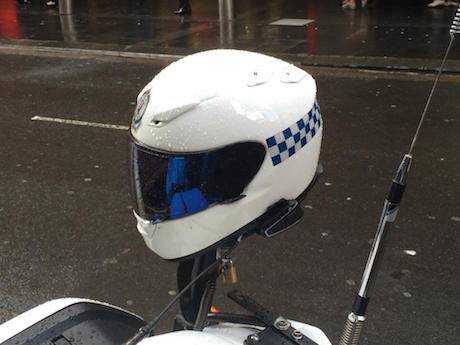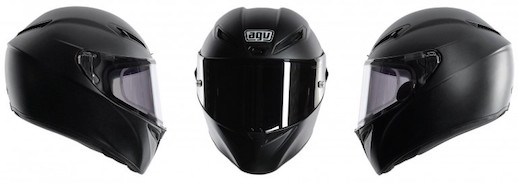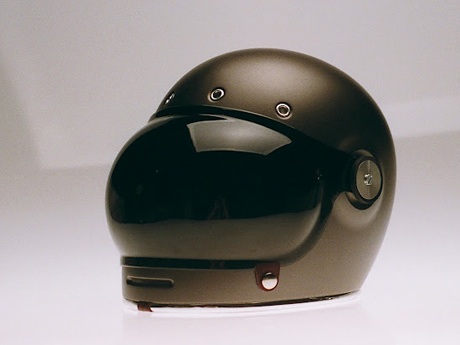Now that Euro helmet standards have been approved in all states and territories except Western Australia, the focus for enforcement could shift to tinted visors, warns longtime helmet campaigner Wayne Carruthers.
(Western Australia is expected to fall into line soon and South Australia has announced their laws will change by May.)
Wayne has compiled the following list of four common myths about the legality of tinted visors to help riders fathom the conundrum of our “AS1609” standards laws.
Myth 1 – Tinted visors are illegal

Even police wear tinted visors, so they are not all illegal!
AS1609 says clear or untinted lenses must have a “luminance transmittance” of not less than 85% while tinted and “gradient-density lenses should not be less than 50%” and “shall comply with the coloration requirements of AS1067”.
It says visors assembled with a tinted strip positioned outside the normal field of view do not require special labelling.
“However, the tinted area must comply with the prescribed coloration requirements and optical performance,” Wayne says.
That means only very dark visors may be illegal.
Wayne says there is no requirement for stating “luminance transmittance” percentages on visors, and it would be impossible for police to test this at the roadside.
Myth 2 – Visors must be labelled AS1609
“AS1609 only specifies the labelling below, there are no other visor labelling requirements in AS1698 or State helmet regulations,” Wayne says.
AS1609-1981 – Section 7. MARKING AND LABELLING
7.1 MARKING. The name or registered trade name or mark of the manufacturer shall be marked on the eye protector or on a label securely attached thereto.
Visors designed to fasten on to specific designs or brands of helmets shall be clearly marked to this effect.
Tinted lenses shall have the word ‘clear’ or ‘tinted’ as appropriate, embossed on the lens in an appropriate visible position.
7.2 INFORMATIVE LABELLING. In addition to the marking requirement of clause 7.1, durable labels shall be attached to eye protectors or their wrapping conforming with Clause 7.3. Brochures accompanying eye protectors and slips supplied with replacement lenses shall also contain the information prescribed in clause 7.3.
7.3 PRINTING OF LABELS, BROCHURES AND SLIPS.
7.31 Wording. The wording shall be as follows.
WARNING
Tinted lenses are not suitable for use at night
Lenses damaged by scratches will reduce visibility and should be replaced
Visors and goggles having minor scuffed areas or small surface scratches should not be used at night
Contact with petroleum products may impair the optical properties and reduce the mechanical strength
7.3.2 Printing – This clause goes on to specify fonts, font sizes and layout of labels

Myth 3 – It is illegal to wear a tinted visor at night
“There are no laws or regulations in any State or Territory specifying it is illegal to wear a tinted visor at night,” Wayne says.
“It is simple common sense not to wear a dark tint visor at night, however there are some light-tint (usually yellow) visors which enhance night vision.
“Police are not empowered to write any infringement notice for wearing a tinted visor at night, but are able to informally caution a rider with regard to the safety of wearing a tinted visor at night.”
Myth4 – Iridium and mirror visors are illegal
“These fancy visors are no different to any other tinted visor. They must meet the same requirements,” Wayne says.
“The flash coatings on mirrored visors only actually use a small percentage of light to create the mirror effect. For instance Shark state all their visors meet UNECE 22.05. Schuberth also state all their visors meet UNECE 22.05
“AS1067 sets out the colouration requirements to ensure the ability to see traffic light colours is not impaired just as it does for sunglasses.”


